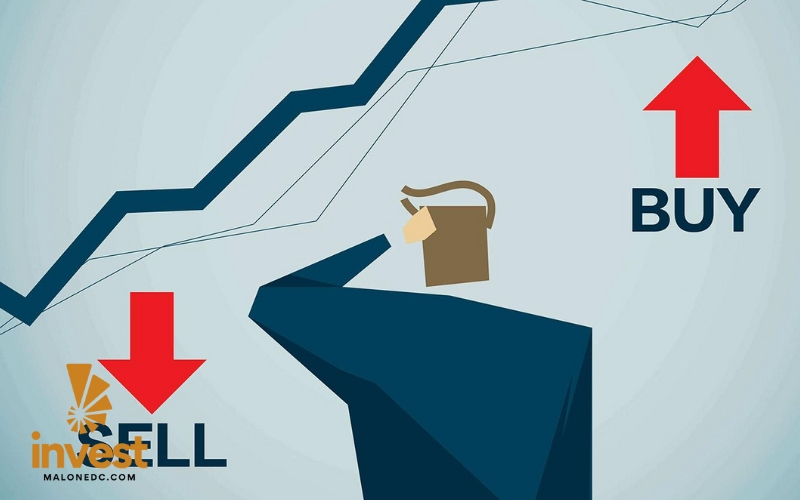Investing in stocks is one of the popular and attractive forms of investment for many investors. However, to achieve high profits from investing in stocks, deciding when to buy and sell is extremely important. The right decision will help investors maximize profits, while the wrong decision can lead to unnecessary losses. In this article, we will learn about important factors to determine the effective time to buy and sell stocks.
1. WHEN SHOULD I BUY STOCKS?
Deciding to buy stocks is the first step in the investment journey and requires careful analysis. Here are some suitable times to buy stocks:
1.1. STOCKS WITH GROWTH POTENTIAL
One of the important reasons to buy stocks is when investors see that the stock has the potential to grow in the future. Companies with stable growth and bright business prospects are good choices. Investors need to carefully research the industry in which the company operates, market trends, and macro factors that may affect the company’s development. For example, companies in the technology, healthcare, or renewable energy industries may have strong growth potential in the future.

To determine whether a stock has growth potential, investors can rely on financial indicators such as growth rates in profits, revenue, and earnings per share (EPS). In addition, studying the company’s financial statements and understanding their development strategies also help determine the potential level of the stock.
1.2. BUYING THE DIP
A popular strategy in stock investing is to “buy the dip.” Sometimes, stock prices fall sharply due to temporary factors, such as disappointing earnings or short-term bad news. However, if these factors do not affect the company’s long-term prospects, this can be an opportunity to buy shares at a discount to their intrinsic value.
Buying shares on dips can help investors make high profits when the stock price recovers. However, investors need to be cautious and ensure that this decline is not a sign of serious problems within the company.
1.3. VALUE INVESTING
Value investing is a strategy of finding stocks that are priced below their intrinsic value. These stocks may be undervalued by the market, but still have the potential to recover and increase in price in the future. Investors following this strategy often use financial ratios such as the P/E (Price-to-Earnings) ratio, the P/B (Price-to-Book) ratio, and other financial ratios to identify stocks that are undervalued but have growth potential.
When buying stocks using a value investing strategy, investors need to ensure that the intrinsic value of the company is not affected by irreversible factors, such as poor management or an outdated business model.
2. WHEN SHOULD I SELL STOCKS?
The decision to sell a stock can be more difficult than the decision to buy, as many investors are reluctant to sell their investments. However, selling a stock at the right time can help maximize profits and minimize risks. Here are some signs that it is time to sell a stock:
2.1. THE STOCK HAS REACHED ITS TARGET PRICE
A major reason to sell a stock is when it has reached the target price that the investor initially set. The target price is determined based on factors such as the company’s growth, the industry’s situation, and the economy. When the stock reaches this price, the investor can sell it to realize the profit and reinvest it in other opportunities.
However, sometimes the market can change rapidly, and the stock price can move beyond the target price. In this case, investors need to consider whether to continue holding the stock, based on fundamentals and long-term prospects.
2.2. THE COMPANY LOSSES GROWTH POTENTIAL
If an investor finds that the company they have invested in no longer has growth potential or is experiencing serious problems, it is time to sell the stock. These problems may include a decline in profits, a change in business strategy, or the emergence of stronger competitors.
To determine when to sell, an investor needs to monitor the company’s business situation and evaluate the factors that affect the company’s growth potential. If the company is unable to adapt to changes in the industry or is experiencing serious problems, selling the stock may be the right decision.
2.3. THE GENERAL MARKET IS DOWN
Another factor to consider when deciding to sell a stock is the general market situation. If the stock market is in a strong downtrend or there are signs of a financial crisis, investors may decide to sell stocks to avoid the risk of losing assets.
However, if investors believe that the decline is temporary and may recover in the future, they can hold stocks and wait for opportunities. The decision to sell in this case depends on the level of risk that investors can accept and their investment strategy.
3. DECISIONS TO BUY AND SELL STOCKS REQUIRE PATIENCE
One of the important factors when investing in stocks is patience. Investors should not rush to buy or sell stocks based on short-term news or random price fluctuations. Instead, they should build a long-term investment strategy, monitor the development of companies and markets, and make decisions based on careful analysis.
CONCLUSION
Investing in stocks is a long-term process that requires careful research and the ability to make the right decisions. Determining when to buy and sell stocks can help investors maximize profits and minimize risks. Always remember that a successful investment strategy depends not only on choosing the right stocks, but also on knowing the right time to buy and sell stocks.
